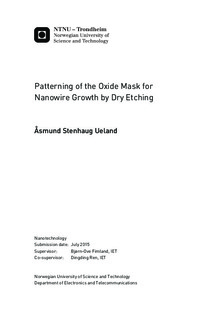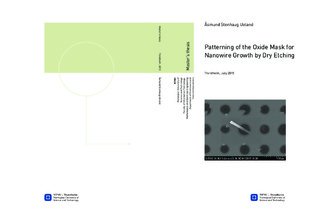| dc.description.abstract | In this master s thesis it is investigated how inductively coupled plasma reactive-ion etching, in combination with hydrofluoric acid wet etching, can be used to produce consistent and reliable nanoscaled holes with a high aspect ratio and a flat bottom in a silicon dioxide mask covering a silicon substrate. The inductively coupled plasma reactive-ion etching technique is found to be very promising, however, more work need to be put into finding the right electron resist for the process. The resist used in this thesis, 950 PMMA A2, proved to etch away too fast in the dry etching plasma. Using an aluminium hard mask in replacement for the electron resist mask was also investigated. The results were promising, but the aluminium mask should have been kept as thin as possible. | |

